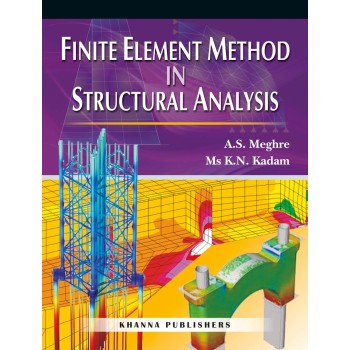Finite Element Method in Structural Analysis
- Author A.S. Meghre and Ms. K.M. Kadam
- ISBN: 978-81-7409-283-0
- ₹ 349.00
-
₹ 279.20
| Book Detail | |
| Publication Year | 2014 |
| ISBN-13 | 978-81-7409-283-0 |
| ASIN | 81-7409-283-8 |
| Language | English |
| Edition | 1st |
| Pages | 519 |
| Preface | |
| Preface | Finite element method started flourishing from 1960 or so. Since then, the method has acquired immense popularity and has found applications in various fields of engineering. Presently, the method has emerged as a powerful tool of analysis. This is because of various advantage associated with it. The method is versatile and can analyse any arbitrarily shaped structure having any combinations of boundary conditions and subjected to different types of loads. It can be used for static linear, non-linear and dynamic analysis. The method is applicable to solve problems in various fields of engineering. However, this book limits the presentation to structural engineering problems. There are two different views of looking at the finite element method. Mathematicians treat it as a method of solving differential equation. Another view, by engineers, is to treat it as a means of obtaining deformed state of structure using minimum potential energy principle. |
| Table of Contents | |
| Table of Contents | *Introduction *Some preliminaries *Two dimensional analysis *Two dimensional analysis using isoparametric elements *Analysis of axisymmetric solids *Three dimensional stress analysis *Analysis of thin plates *Analysis order thick plates *Higher order thick plates *Analysis of shells *Finite strip method *Non-linear analysis of plates *Additional topics *Appendix *References *Index |

